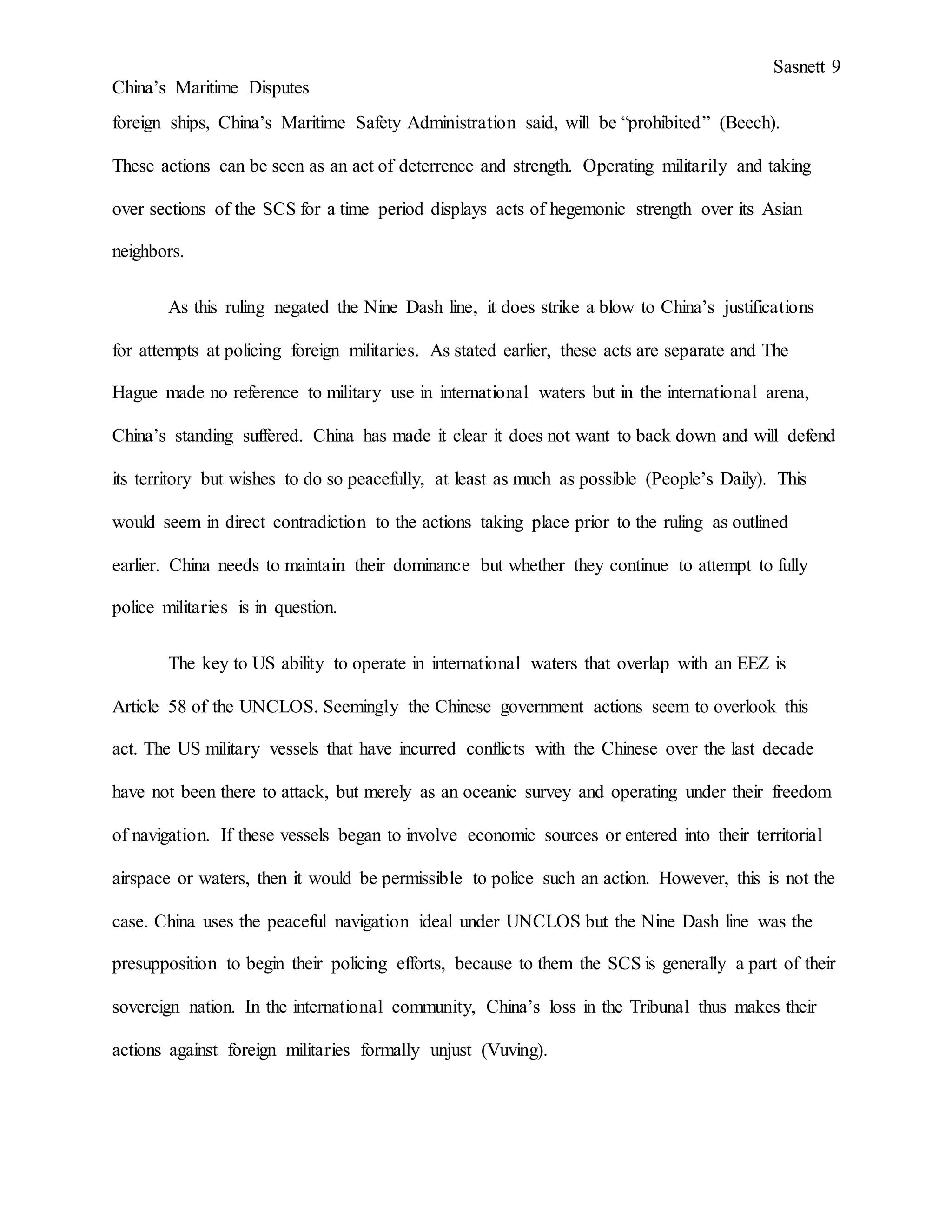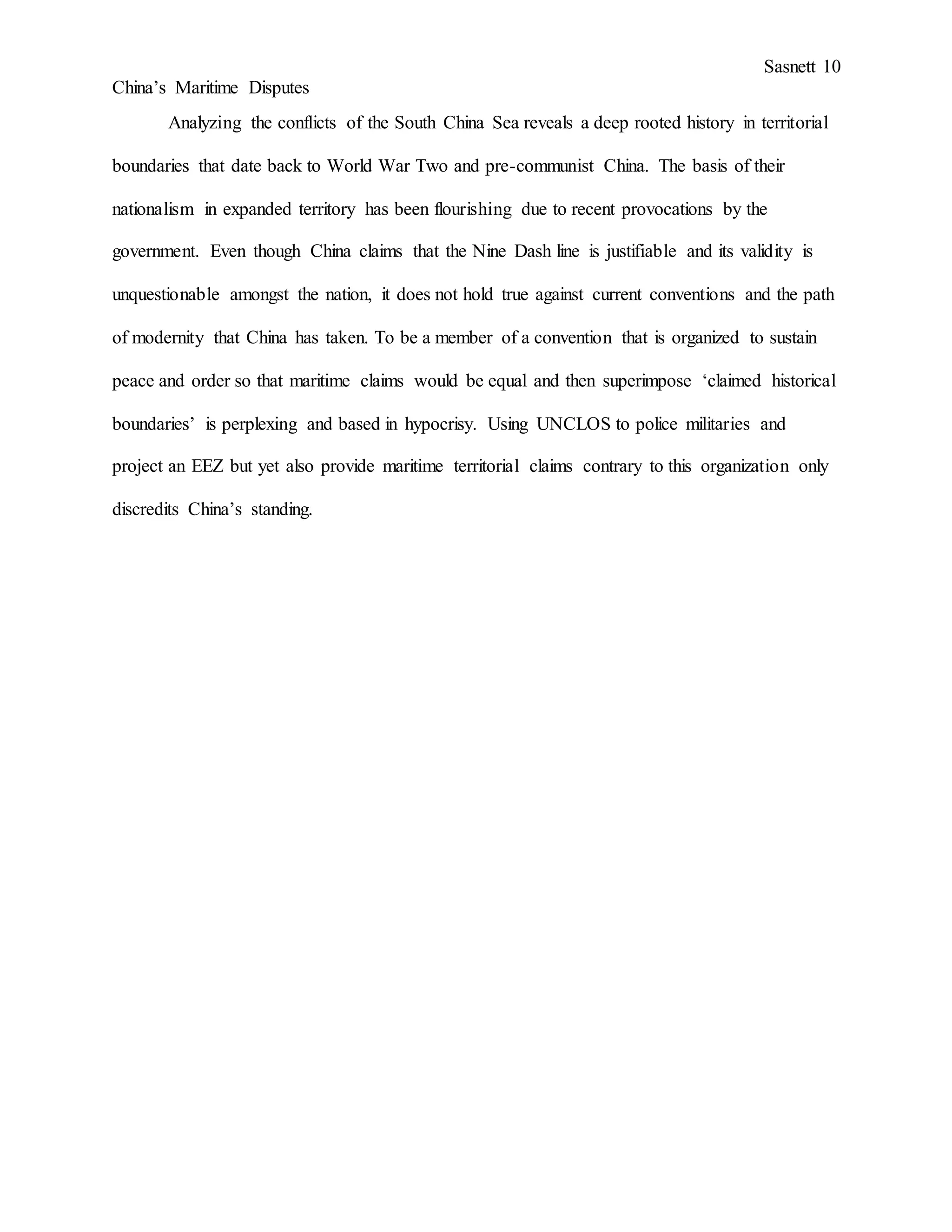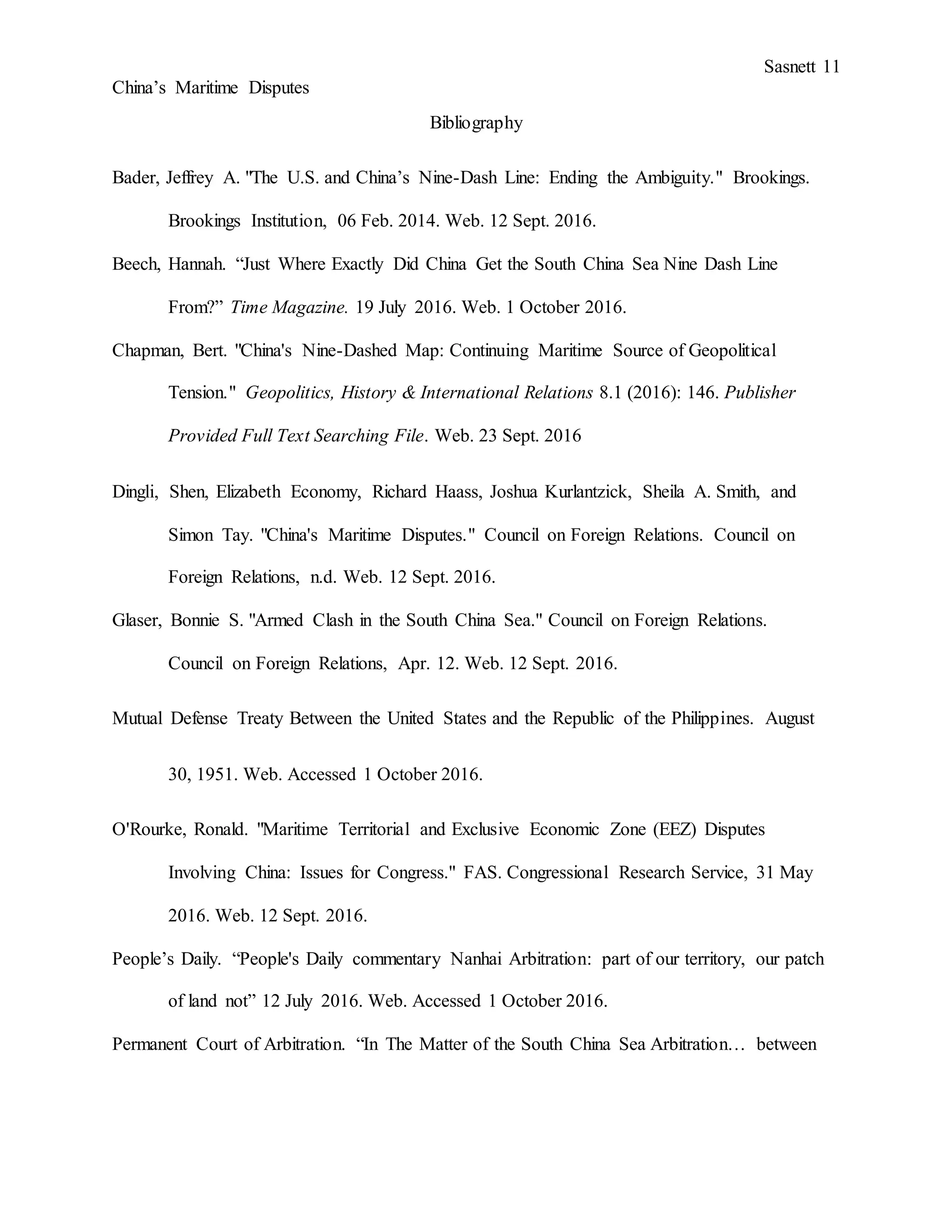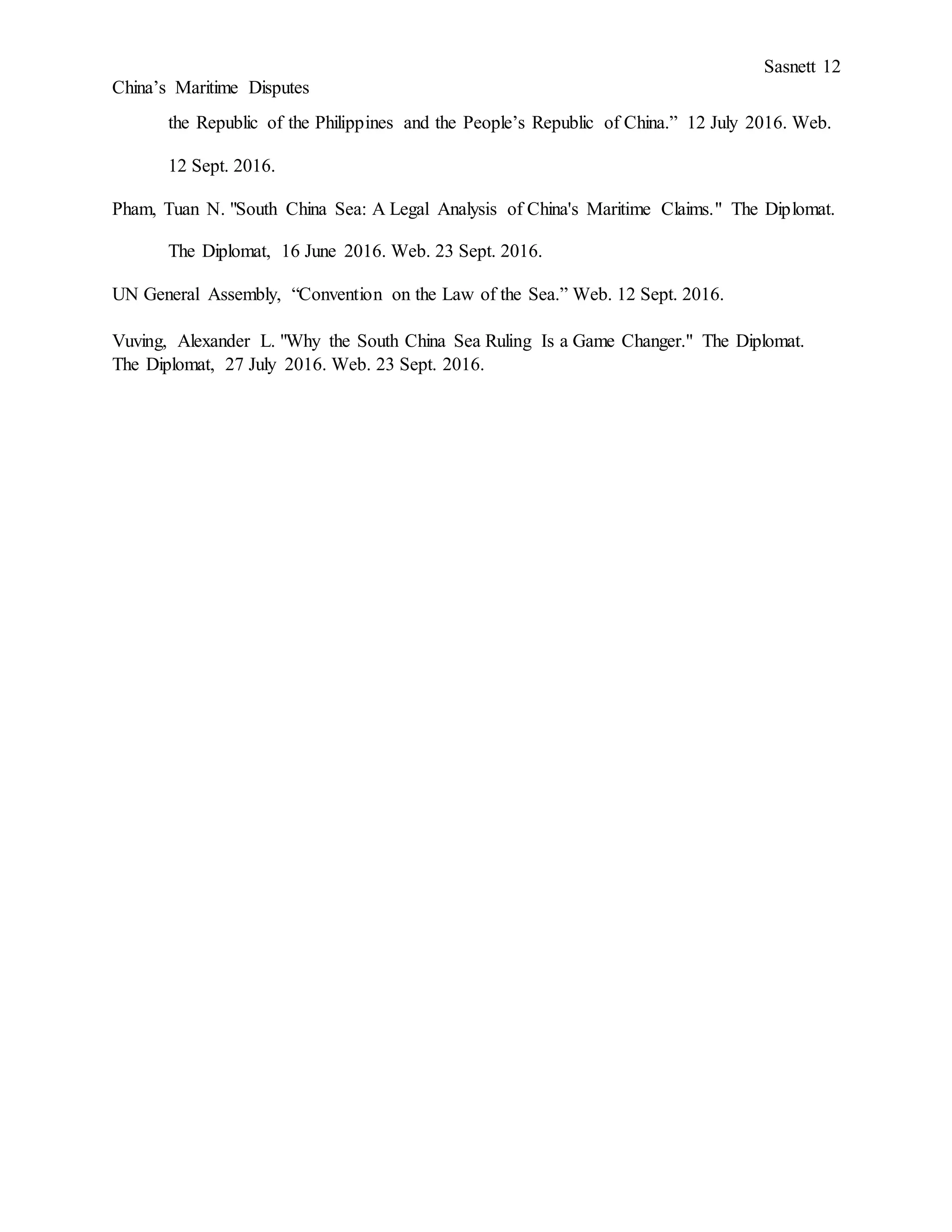This document summarizes China's disputes over maritime territories in the South China Sea. It discusses China's historical claim to much of the South China Sea based on the "Nine Dash Line" and its efforts to police foreign military activity in the region. However, an international tribunal recently invalidated China's Nine Dash Line claim as having no legal basis. Nonetheless, China continues actions to assert control, including recent military drills, and does not recognize the tribunal's authority. While China argues it has rights under the UN Convention on the Law of the Sea to regulate foreign activity in its EEZ, the tribunal found this does not permit restricting innocent passage of foreign militaries in international waters.
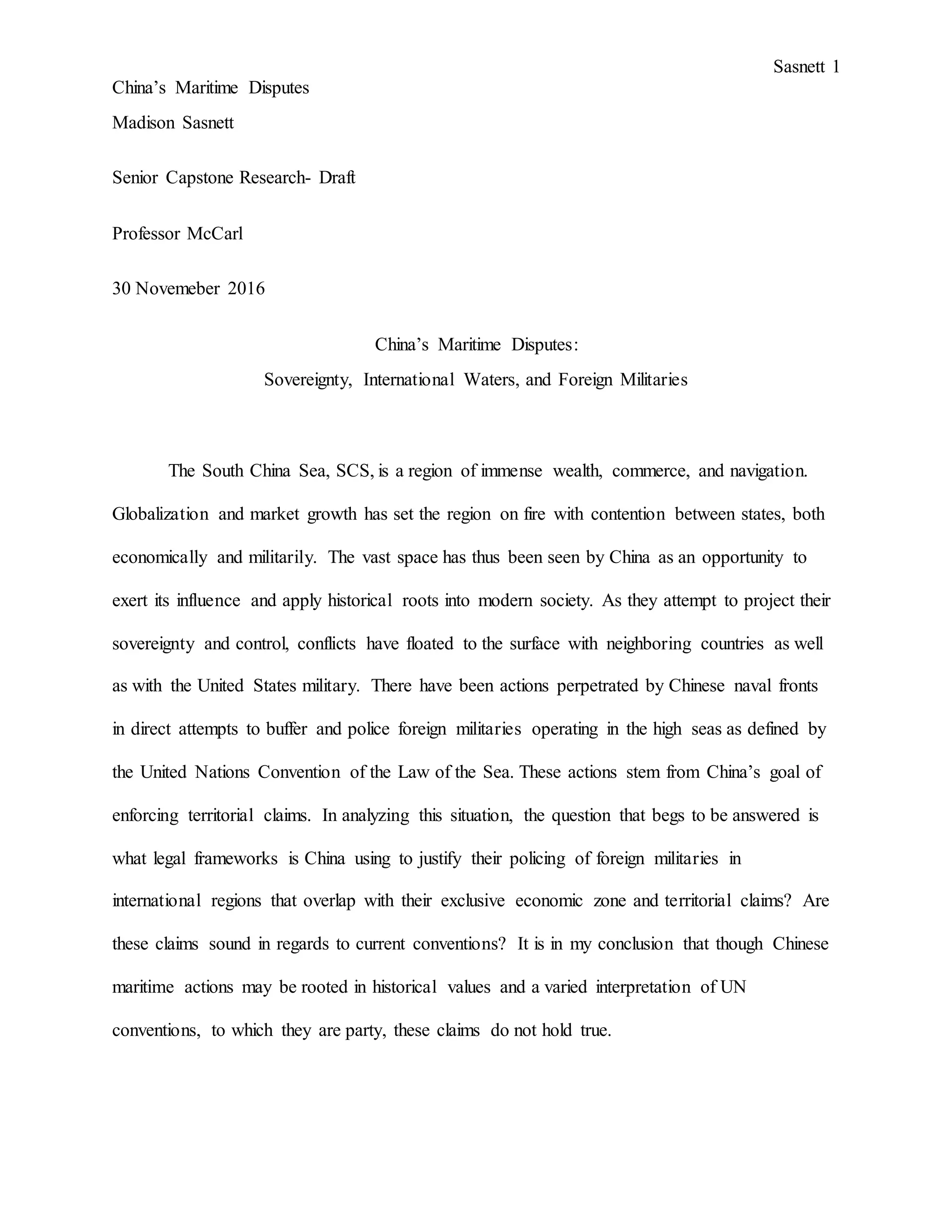
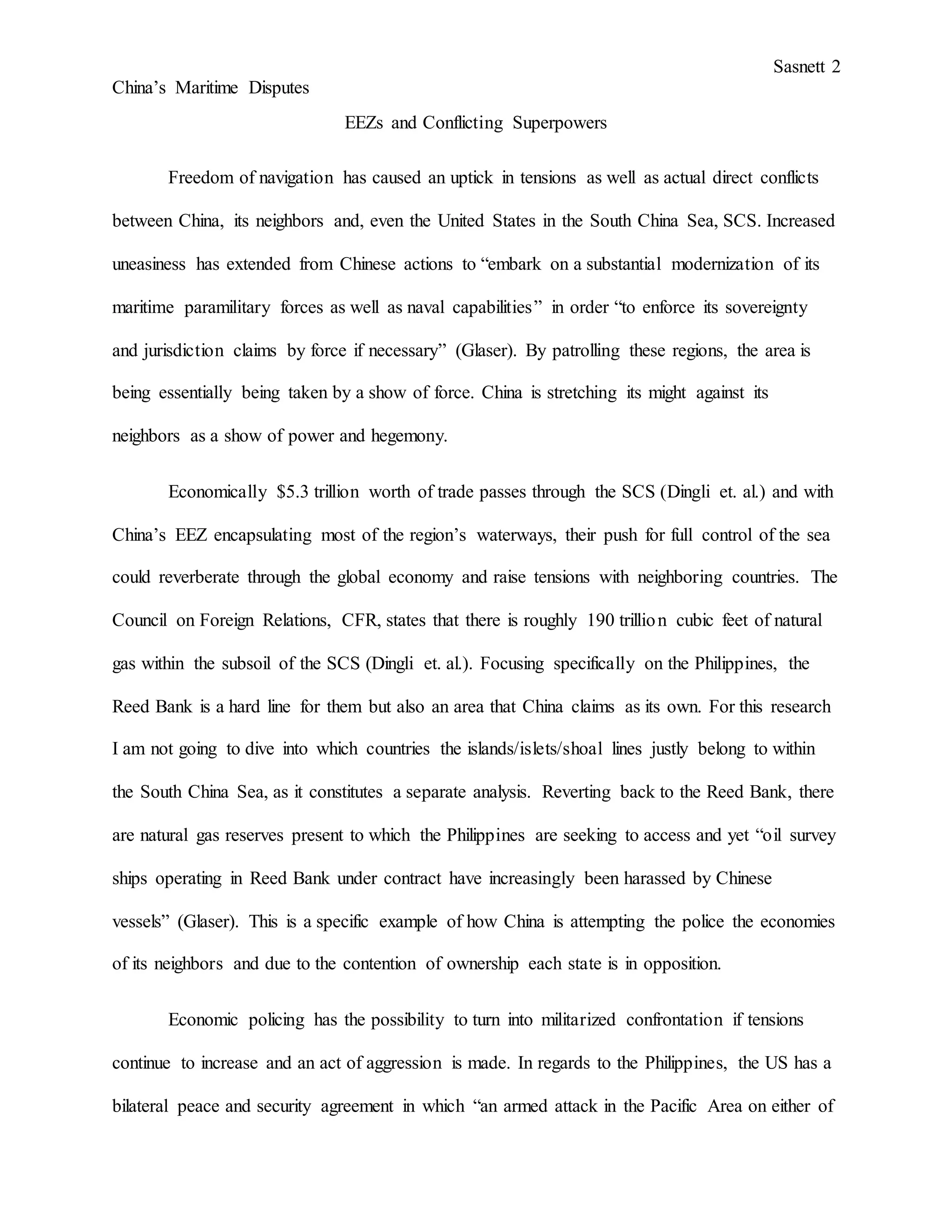
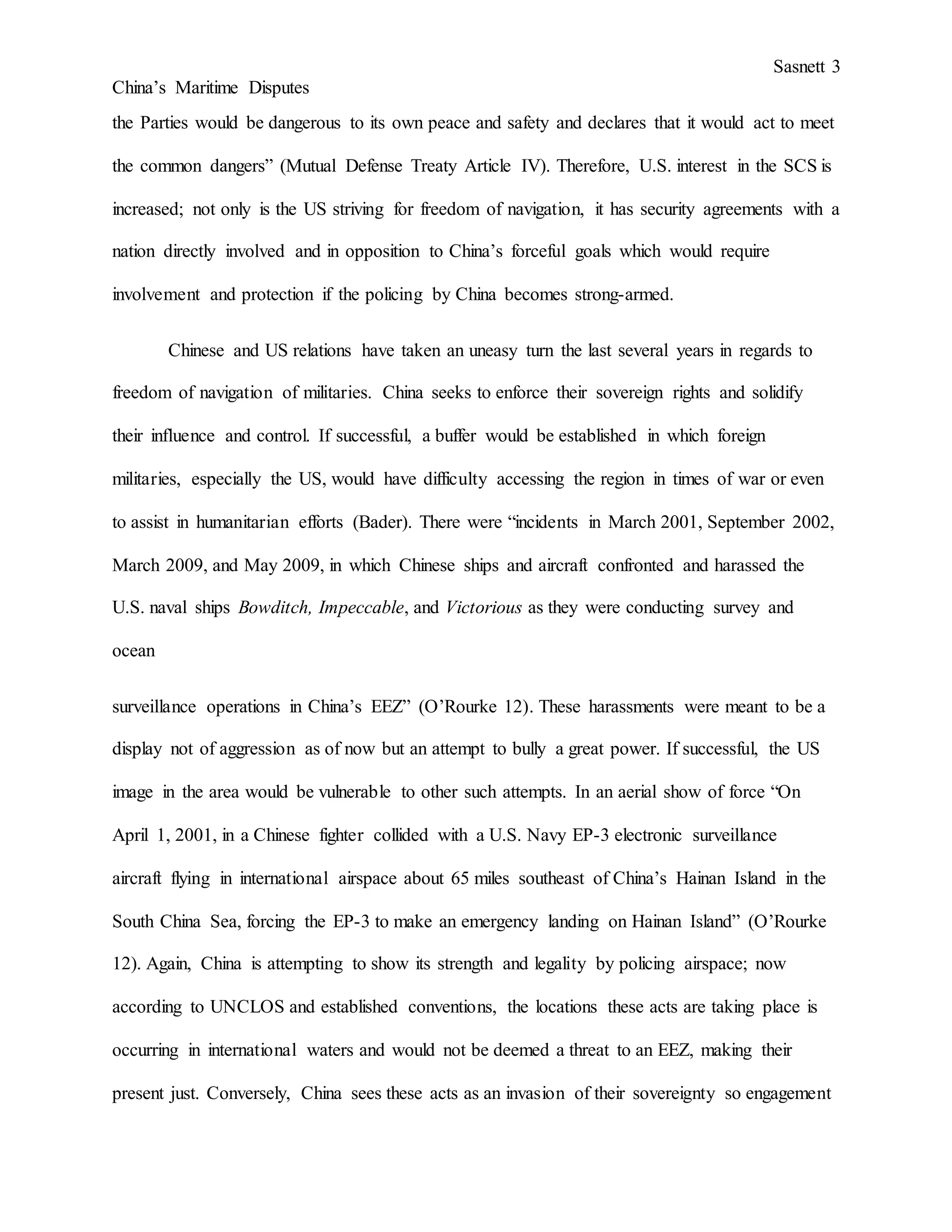
![Sasnett 4
China’s Maritime Disputes
would be just. In a direct military push to redirect US militarized ships “an incident [occurred]
on December 5, 2013, in which a Chinese navy ship put itself in the path of the U.S. Navy
cruiser Cowpens as it was operating 30 or more miles from China’s aircraft carrier Liaoning,
forcing the Cowpens to change course to avoid a collision” (O’Rourke 12). Two recent acts
which were perpetrated by Chinese fighters display the extent to which China strongly believes
the SCS is in their sovereign territory and willing to push right to the edge of physical action. It
would be apparent to presume China’s actions are attempts to weaken the US power and
influence in the Asia-Pacific region as well to further implement their own resolve of power;
“On August 19, 2014, in which a Chinese fighter conducted an aggressive and risky intercept of
a U.S. Navy P-8 maritime patrol aircraft that was flying in international airspace about 135 miles
east of Hainan and an incident on May 17, 2016, in which Chinese fighters flew within 50 feet of
a Navy EP-3 electronic surveillance aircraft in international airspace in the South China Sea—a
maneuver that DOD characterized as ‘unsafe’” (O’Rourke 12).
The concept of territorial disputes and that of policing militaries within China’s EEZ are
fundamental but also separate issues (O’Rourke 14). UNCLOS does not designate land rights
and to whom which territory belongs; China’s mainland is indisputable so the use of UCLOS and
their EEZ as their methodology for attempts to buffer foreign militaries would still be possible.
The territorial disputes, if won would only extend their reach but if lost it would not ultimately
alter their actions.
A rise in China’s naval efficiency and strength acts as a counter to US force and allies in
the region. The US main strategic goal would be to maintain freedom of navigation in the face of
Chinese attempts to police the region. To fully understand the reasoning’s for such actions and](https://image.slidesharecdn.com/4cf58118-a320-42ed-8d39-9b8c61d3ea01-170118221633/75/SRP-Final-Paper-4-2048.jpg)
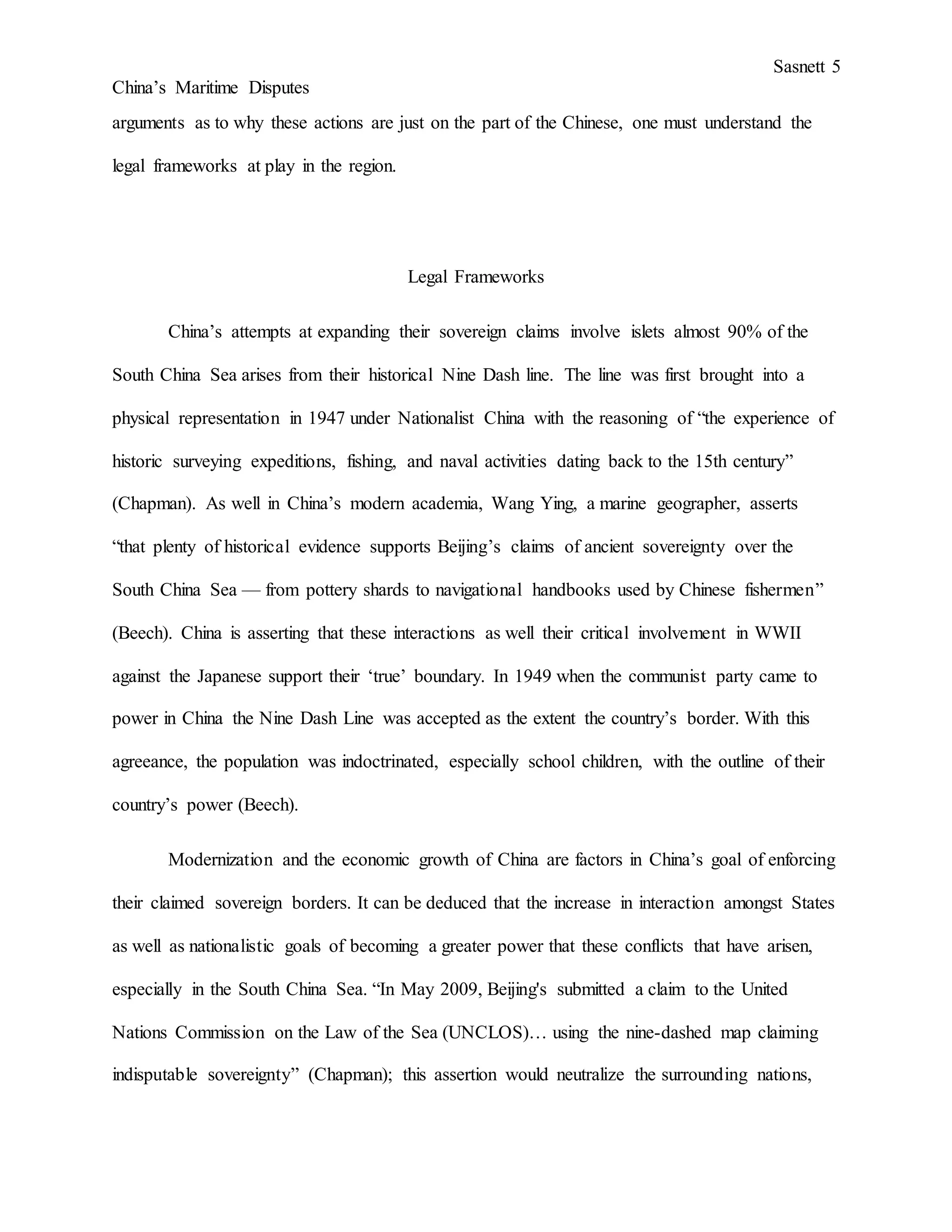
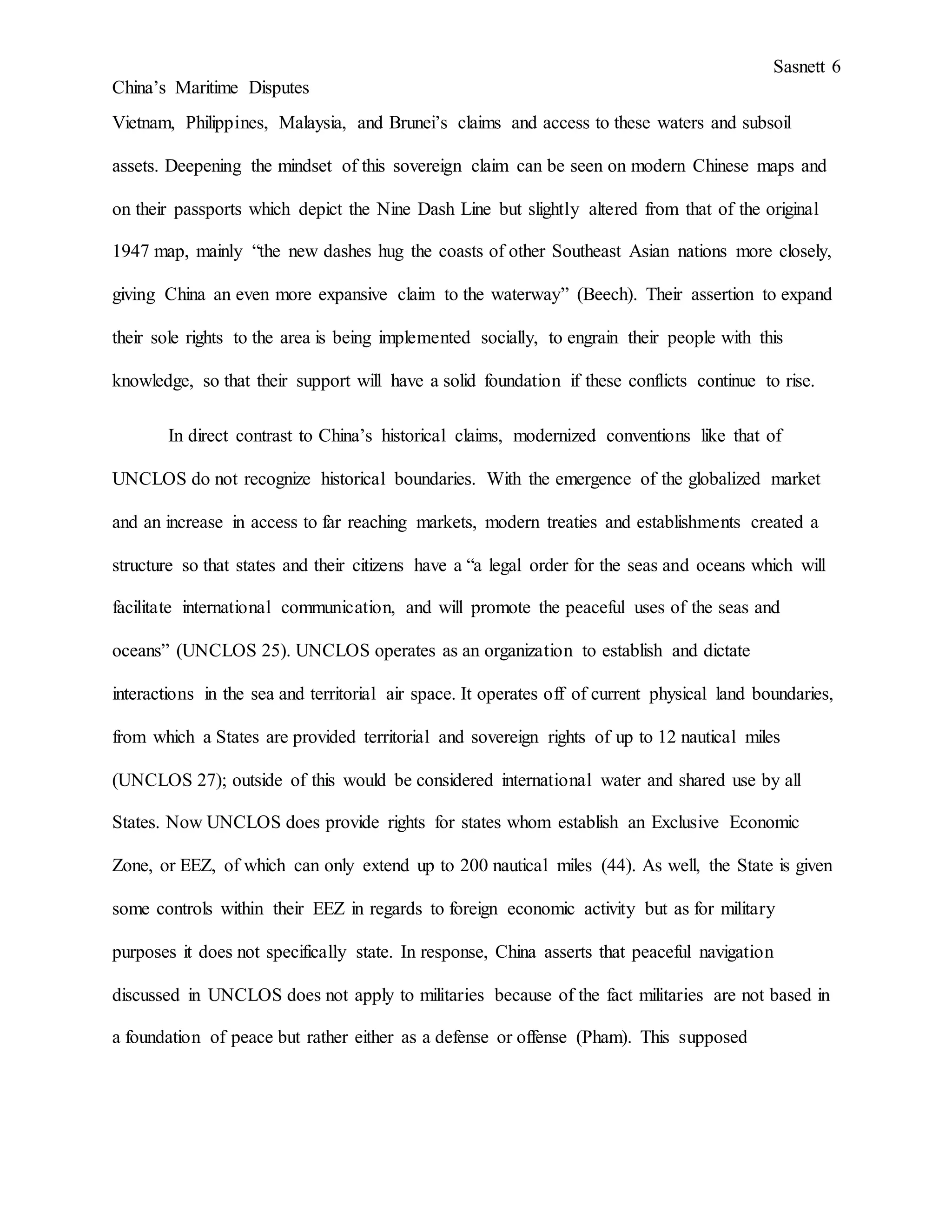

![Sasnett 8
China’s Maritime Disputes
over the relevant maritime features in the South China Sea” (Arbitral Tribunal 4). Continuing to
make the claim that the dispute in the SCS is a territorial one, would make the UNCLOS method
of disagreement inappropriate.
Though the Tribunal recognized their contention, it could not be overlooked that the use
of the Nine Dash line was in fact to extend sovereignty over maritime boundaries that are not
based off of inhabitable islands but rather historical contexts. Though The Hague found the Nine
Dash line as contradictory and invalid amongst today’s agreed upon conventions and therefore
holds no place in dictating maritime boundaries, China still refuses to let their claims go. The
Chinese government’s mouthpiece, the People’s Daily, released an article following the decision
of the tribunal stating that “China will take all necessary measures to protect the territorial
sovereignty and maritime rights and interests, all against China's territorial sovereignty and
maritime rights and interests of the attempt can only be wishful thinking.” Essentially, they still
hold in regard their nationalist territorial views, and will not let modern conventions erase their
historical territory. “For this thoroughly political provocation, China will certainly not accept that
this is both a necessary move to defend China's territorial sovereignty and maritime rights and
interests, but also to maintain the dignity and status of international law, international law
practice just move” (People’s Daily).
The repercussions of China’s statements are yet to be fully known but with the language
of Chinese empowerment and protection of rights being exalted through the media tensions will
continue to rise. After the ruling was made, China declined to start bilateral talks with the
Philippines and later announced that “another set of military drills in the South China Sea,
following live-fire action earlier in the month” would take place. China is cordoning off part of
the South China Sea for war games from July 19 to 21, [2016]. Entrance to these waters by](https://image.slidesharecdn.com/4cf58118-a320-42ed-8d39-9b8c61d3ea01-170118221633/75/SRP-Final-Paper-8-2048.jpg)
